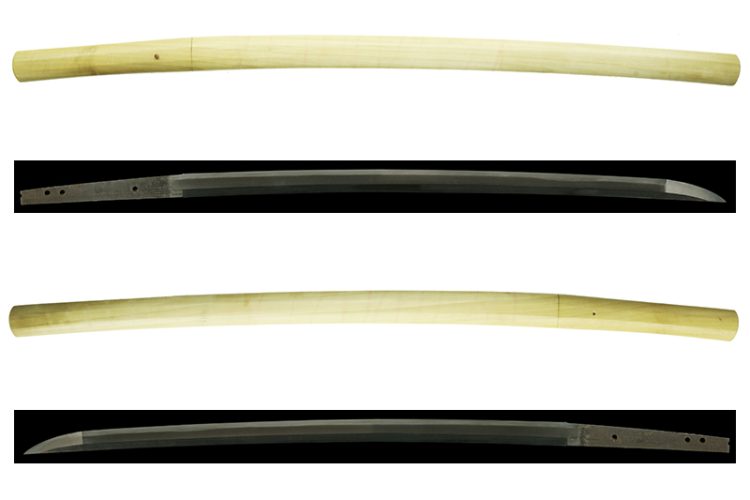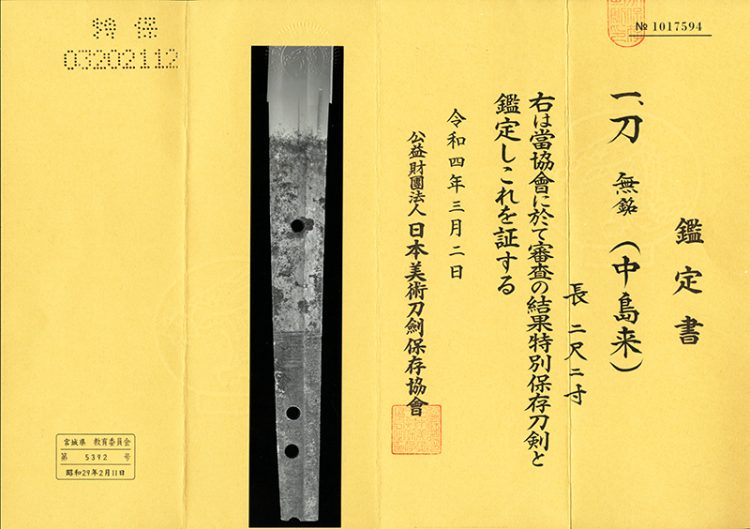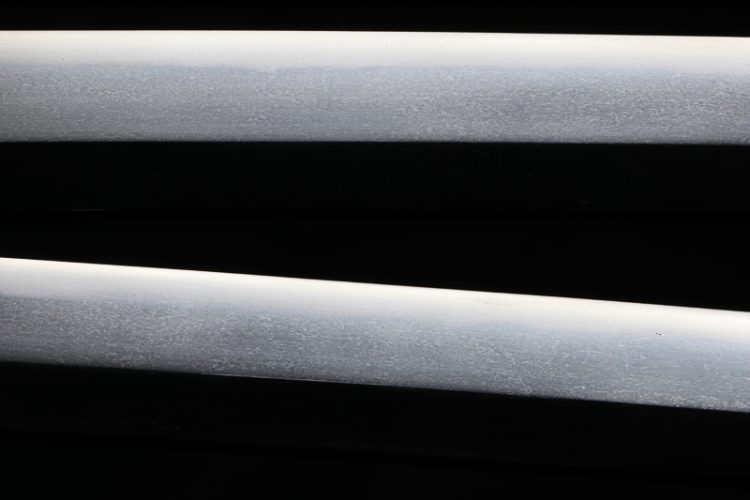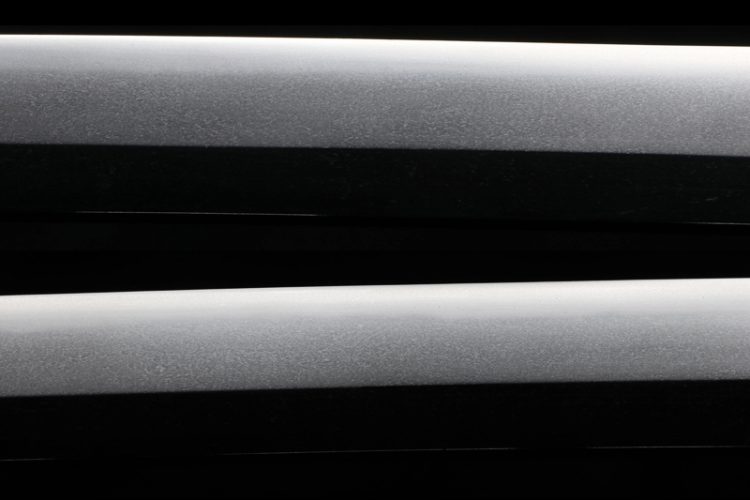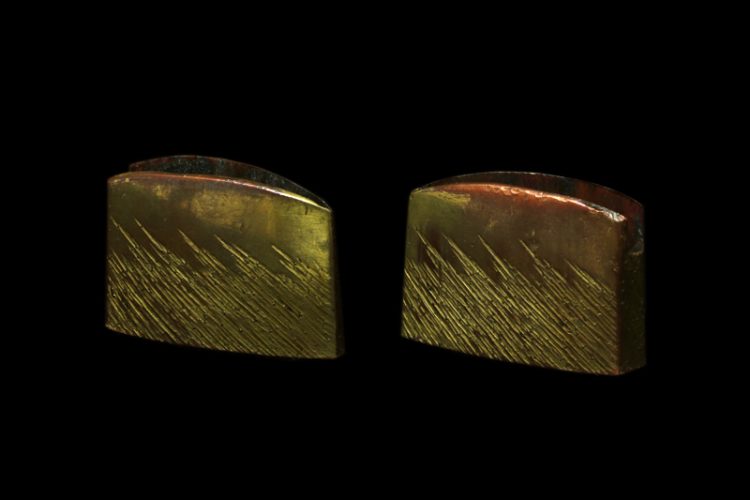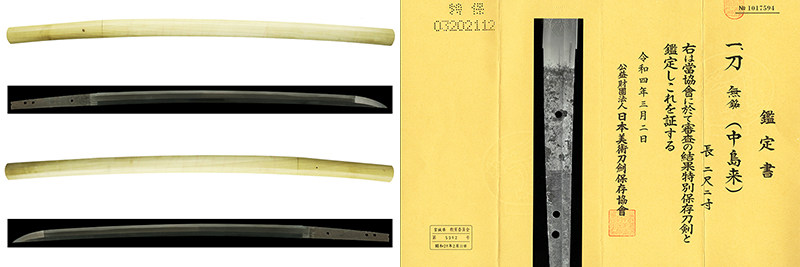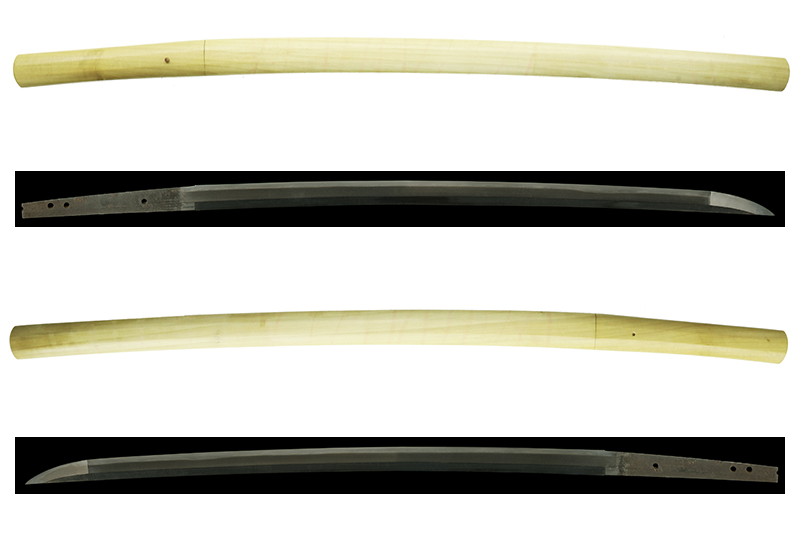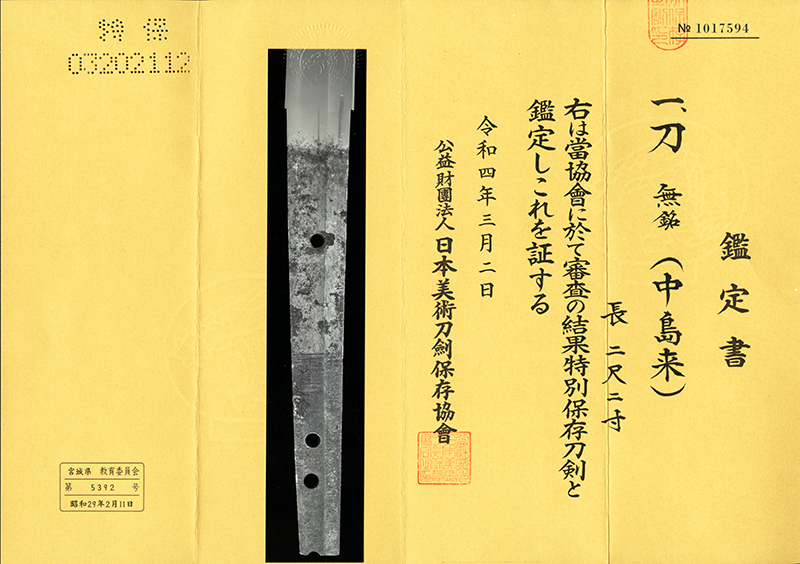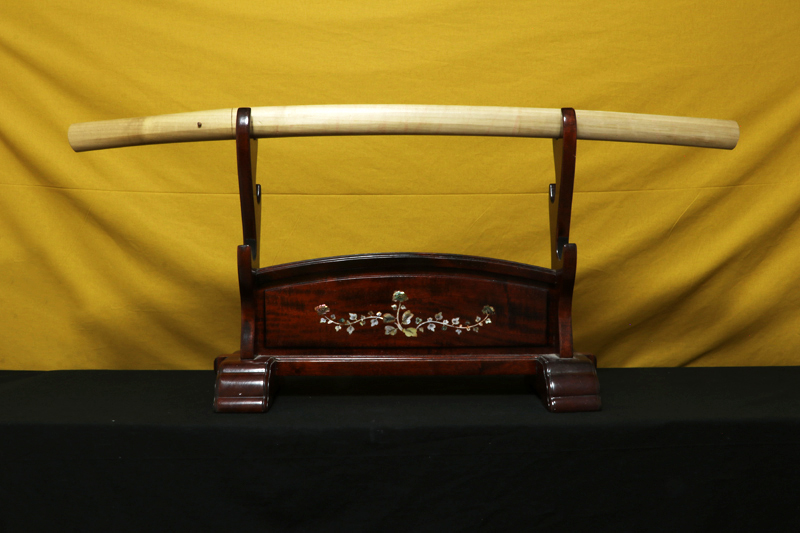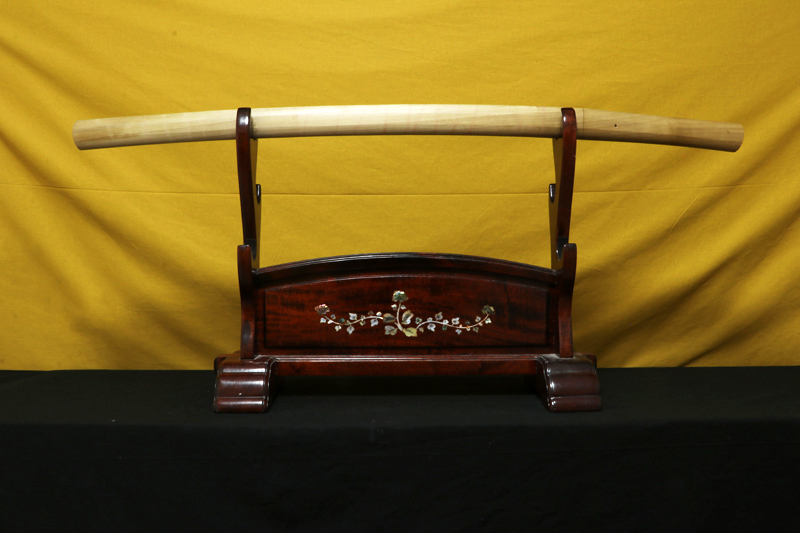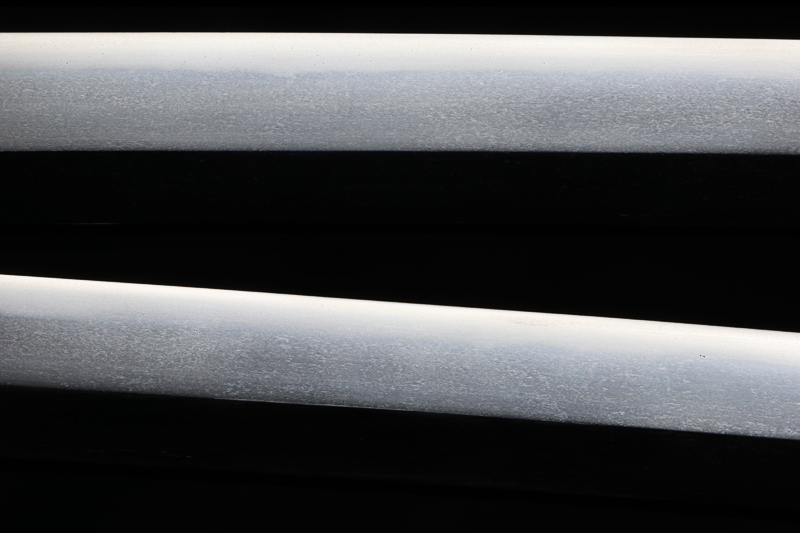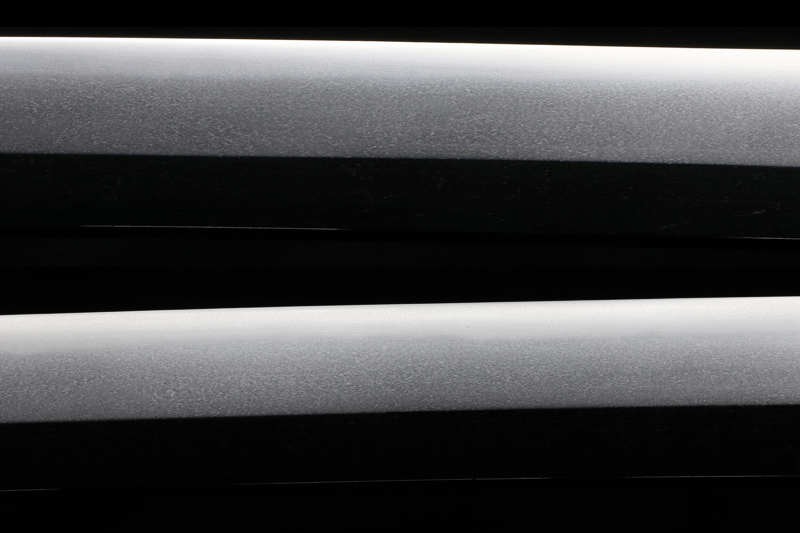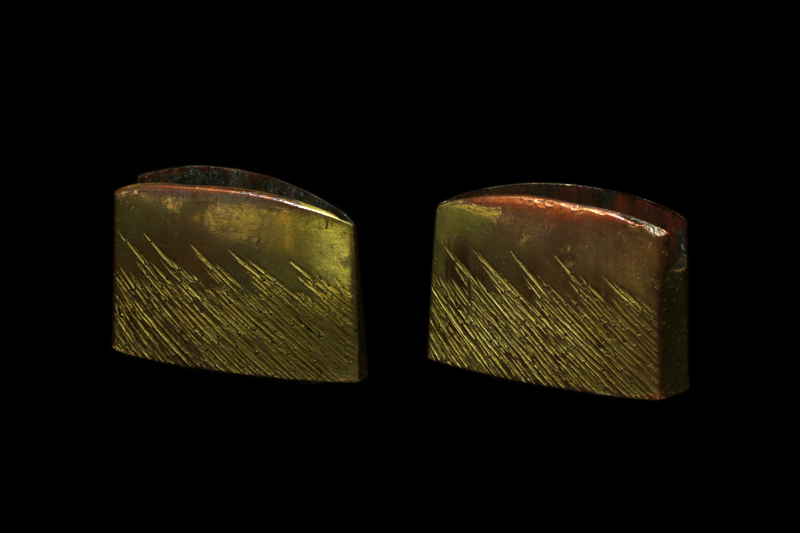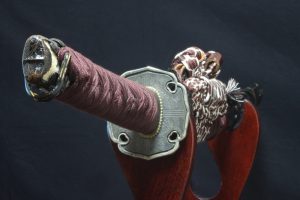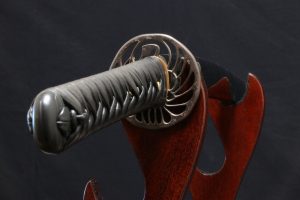説明
「刀姿 sword figure」
体配は鎬造り庵棟、身幅やや太く重尋常、鳥居反り大鋒。茎は大磨り揚げで鑢目は切、茎尻は一文字に切られる。
「地鉄 jigane」
地鉄は板目肌に小板目が交じり良く練れて、ほのかに映りが立つ。
「刃紋 hamon」
刃紋は直刃調の互の目に小互の目が交じり、足入り、刃縁砂流しかかり。刃中に葉、金筋が入る。釯子は乱れ込み小丸に返る。
「特徴 detailed」
中島来とは、鎌倉時代後期に来國俊の門人である来國長が、京都から摂津国中島に移住したことに始まる来派の一分派を指します。この中島で作刀されたものを中島来と呼びます。
摂津国中島とは、神崎川と大川(旧淀川)に挟まれた地域を指し、現存しない中津川を境に北側を北中島、南側を南中島と呼びました。
南中島には有名な大阪天満宮があり、別名「中島天満宮」とも呼ばれます。また、聖武天皇の時代には摂津国分寺がこの地に建てられましたが、幾度も兵火により焼失し、その都度再建を繰り返して現在に至っています。この地域は古来より淀川の水運の港として栄え、人々の往来が絶えず、その賑わいは明治時代に鉄道が敷かれるまで続きました。豊臣秀吉が大坂城の城下町を建設するまでは、この地が大阪で最も栄えた場所でした。
本作は南北朝時代の中島来による太刀で、身幅が広く、大鋒を持つ豪壮な姿をしています。
Nakajima Rai refers to the branch of the Rai school that originated when Rai Kuninaga, a disciple of Rai Kunitoshi, moved from Kyoto to Nakajima in Settsu Province during the late Kamakura period. The swords forged by this group in Nakajima are known as Nakajima Rai.
Nakajima in Settsu Province refers to the area between the Kanzaki River and Okawa (the old Yodo River). The area north of the Nakatsu River (which no longer exists) was called Kita-Nakajima, and the south was known as Minami-Nakajima.
Minami-Nakajima is home to the famous Osaka Tenmangu Shrine, also known as Nakajima Tenmangu Shrine. During the reign of Emperor Shomu, the Settsu Kokubunji Temple was constructed in this area, although it was repeatedly burned and rebuilt over various eras. Additionally, this region prospered as a port for the Yodo River’s water transportation from ancient times. This bustling activity continued until the construction of railways in the Meiji period. Before Toyotomi Hideyoshi constructed the castle town of Osaka Castle, this area was the most prosperous part of Osaka.
This piece is a Nakajima Rai tachi from the Nanbokucho period, featuring a broad blade and a large kissaki, giving it a magnificent and powerful appearance.
「拵 Koshirae」
ハバキ(habaki) :素銅地金鍍金。
鞘(Saya) :白鞘。
「刀剣の状態 condition of blade」
研:良好です。
傷:欠点に成るような傷は有りません。
